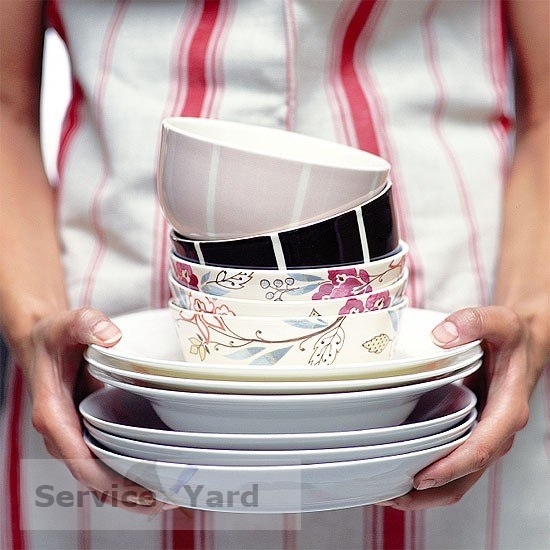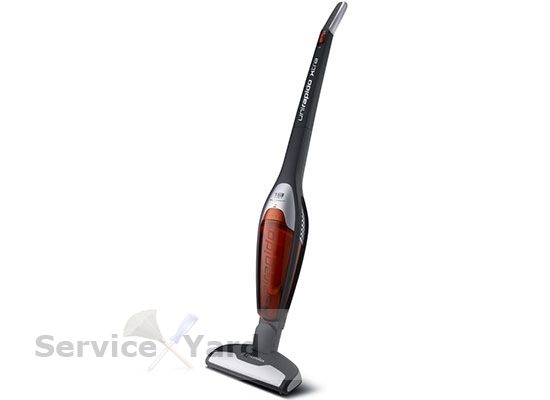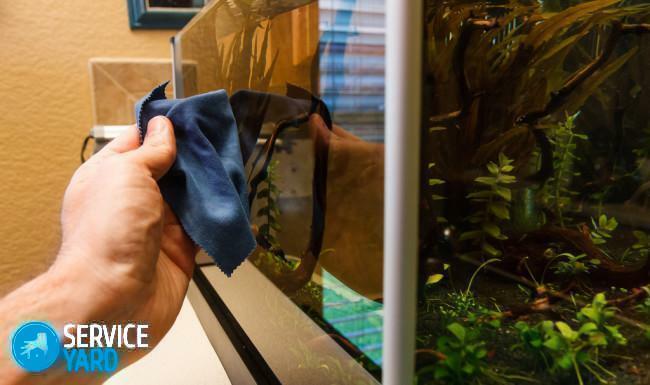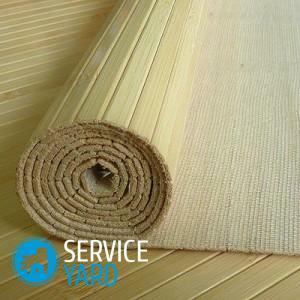
- What are they?
- Choose the material
- What are they made of?
- Adhesive for bamboo wallpaper
- Preparing for assembly
- Assembly
- Caring for bamboo
Bamboo has been used as a building and finishing material in the East since ancient times. But its properties are appreciated in many countries of the world - bamboo curtains and panels can be found in every corner of the globe. The one who first decided to use this material to design their own dwelling inevitably raises the question: how to glue the bamboo wallpaper? It's not as difficult as it might seem at first glance, and now we'll talk about it.
to the contents ↑What are they?
Bamboo wallpaper can be trimmed as the whole room, and some of it, if you, for example, want to draw attention to a separate fragment of the wall or allocate several areas in the room. This decoration is suitable for any room, it will look good in the living room, and in the nursery, and in the bedroom, and in the kitchen, and in the hallway.
The advantages of this material are quite a lot:
- volume invoice;
- excellent thermal insulation properties;
- possibility to make very good soundproofing;
- ability to withstand large temperature changes;
- moisture resistance;
- strength;
- hypoallergenicity.
Let's talk about the invoice
The volume invoice allows not only to give the room a very impressive appearance, but also makes it possible to hide some defects that almost always exist on the walls. If you think that repairing the entire room will be too expensive - you can safely combine the types of finishes.
Bamboo looks good with many materials:
- cork and oak panels;
- with paper and vinyl wallpaper;
- with silk plaster;
- fiberglass wallpaper.
So there is room for imagination, and you can come up with a great many interesting design solutions.
Heat and sound insulation
Many residents of modern block and panel houses complain about the cold in the apartments. The heat supply system seems to be in order, but the house is still too cool, because the walls do not hold heat well. In this situation, bamboo will help you. This natural material gives an excellent thermal insulation, so you can paste bamboo wallpaper, and an additional layer of insulation is not needed.
Allows you to get rid of noise - both street and what comes from the neighbors. The layout of apartments is sometimes such that often occurring in a nearby dwelling can be heard to the slightest rustle. Good sound insulation can be done in several ways. Bamboo wallpaper is one of them.
Important! By its soundproofing properties, it surpasses both vinyl, and even more so paper.
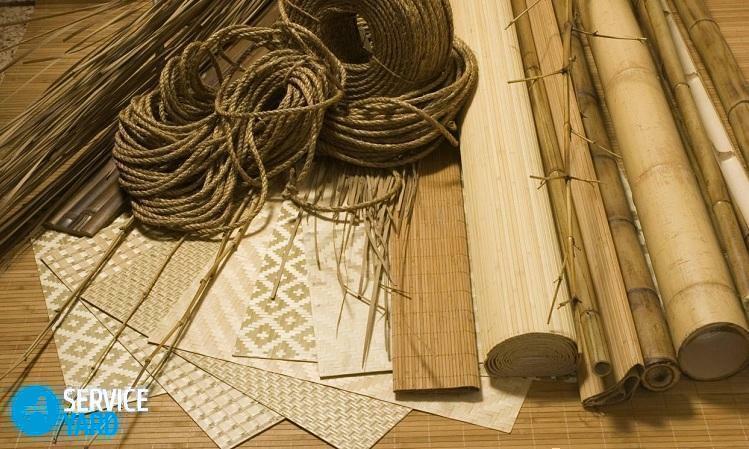
Heat resistance
This may seem strange, but bamboo wallpaper quite often trim the walls of kitchen facilities. There is nothing strange. Like any vegetable material, they can withstand sharp changes in temperature - they do not crack, do not shrink or break. That's why an excellent solution is to glue the bamboo wallpaper in the kitchen.
Important! They are not afraid even quite dangerous, as for other materials, the neighborhood with a modern electric oven.
Water Resistance
Bamboo is an amazing plant. Suffice it to say that this type of wood practically does not rot. That is, you can wash the bamboo wallpaper. In addition, they do not react to high humidity in any way, so that nothing prevents them from sticking them even in the bathroom. And as a facade covering this material is quite practical, so if you want the exterior walls of the villa to be in oriental style - do not doubt, this is quite real.
Mechanical strength
The strength of bamboo is legendary. Those who have already tried to trim walls with such material can confirm that it is practically not affected by mechanical damage. He is not afraid of cat's claws, dog's teeth, or a dart flying accidentally into the wall. Accidentally damage the coating is almost impossible, so it serves a very long time, not particularly losing its appeal.Environmentally friendly
Do you have allergies in your home? Well you can do, you have to repair the apartment so that allergic manifestations reduce to a minimum. Bamboo wallpaper for such cases and created. Dust they do not absorb, with the environment, almost do not react, so there is practically no danger of allergies. This makes it possible to widely use this material for finishing children's rooms.
A few more pluses
Manufacturers of finishing materials offer buyers bamboo wallpaper of a variety of colors, so that you can choose suitable for almost any interior.
In addition, bamboo is treated with special compounds that prevent the appearance of fungus. And fire-fighting compounds are also used, so this material is used not only in apartments, but also in sanatoria, social centers, etc.
Two minuses
Bamboo wallpapers are all good, but there are flaws in them. Since this plant is considered exotic in European countries and the goods have to be transported from far edges, their cost is quite high. However, the opportunity to choose a finish on the pocket is in this case. The price is affected by several points:
- grade;
- type of processing;
- quality.
In order not to overpay, it is necessary to calculate the quantity very accurately. But if there are surpluses - they can not be thrown away, but make original decorations for furniture.
The second major drawback is the complexity that can arise during installation. The wood is very hard, it is cut with a metal hacksaw, the surface and cuts are not amenable to grinding, so there are problems with the accuracy of the docking. Proceeding from this, after purchase it is necessary to arm yourself with knowledge how to glue the bamboo wallpaper correctly.
to the contents ↑Choose the material
Bamboo wallpaper is sold as rolls, like many others:
- The width can be very different. The narrowest ones are less than a meter( usually 90 cm), the widest ones are up to 2, 5 m.
- The racks themselves are very different. In the range of construction shops you will find a very narrow, no more than 4 mm, and quite wide - up to 25 mm.
These wallpapers are divided into two types. It depends on what part of the trunk they are made of:
- from the outside;
- from the inside.
Reinforcement from the outer part of the
In the first case, the structure of the wood is very clearly visible, however, the rails themselves can vary greatly in color and texture. The color can be:
- beige;
- honey;
- reddish;
- pistachio,
- vanilla.
Important! Many shades can be even for wallpaper from one roll. This is due to uneven thermal effects.
Reiki from the inside of the
Amazingly smooth reedges. Before they offer the buyer, they are polished. Usually have natural wood colors, but if desired, you can paint the way you like. By the way, in many stores already painted wallpapers are being sold. In principle, an interesting interior can be made using any kind of this material.
to the contents ↑What are they made of?
The bamboo wallpaper consists of two parts:
- slats;
- tissue backbone.
One is attached to the other in two ways:
- is glued:
- is sewn.
To glue the slats on the base, you need a special adhesive for the bamboo wallpaper on a fabric basis.
Important! For a seam - natural or kapron threads are suitable. The seam itself is a decorative element.
to the table of contents ↑Adhesive for bamboo wallpaper
The choice of glue is very important. The wallpaper is quite heavy, so you need to ensure a strong grip of the panel with the wall. Not all adhesive compounds that you can meet on the shelves of building stores come up.
Important! Most likely, you have to give up PVA glue. The wallpaper is tough, and such a composition will not hold them for long. However, in some cases, it will suit - for example, for drywall.
It is better to choose as an adhesive for bamboo wallpaper:
- "liquid nails";
- "steeper nails";
- vinyl or chloroprene glue;
- adhesive adhesive.
Liquid nails
"Liquid nails" - the most reliable option. They can be used if you have concrete, brick or plastered walls. In the strength of fastening when using such a material, there is no doubt, if properly glued bamboo wallpaper.
Important! This composition smells very strong, and the unpleasant aroma persists for a long time. In addition, "liquid nails" produce substances that do not have the best effect on health.
"Steeper nails" and other
"Steeper nails" - a relatively new composition. It has all the properties of "liquid nails", but it does not emit harmful substances and practically leaves no traces.
Suitable options:
- Universal adhesive Multifix. It is designed for gluing bamboo and cork fabrics. It can be used for other materials - for example, it perfectly glues the skin and rubber.
- Lacrysil is also designed for cork and bamboo. Its advantage is that it should not be diluted before it is consumed, it is already sold ready. He does not have a smell, the composition does not emit harmful substances into the atmosphere, but the coupling is simply gorgeous.
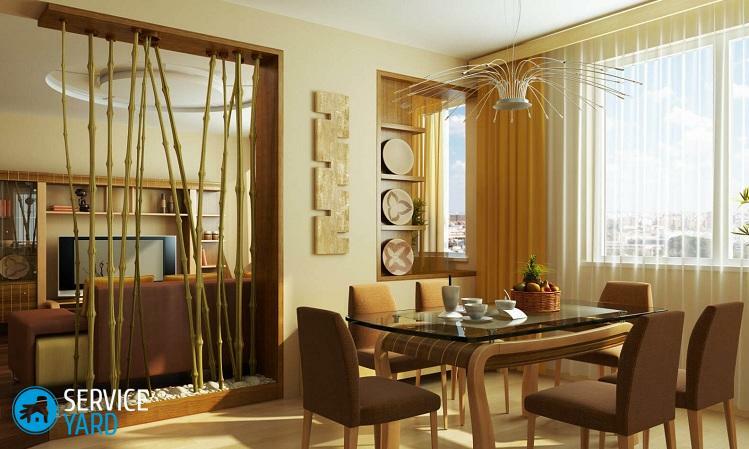
Vinyl and chloroprene
Vinyl or chloroprene glue is applied quickly, holds well, but when working with it you need to take into account some points:
- it smells strongly, so it's better to work in a respirator;
- it must be mixed very well before use.
Velcro
Pufas K12 adhesive tape or "Crazy Velcro" are not bad at their task. Any one of them gives a good coupling, reliably holds and is absolutely safe.
Sometimes you can use the formulations for parquet.
Important! If you are going to trim such gypsum boards with gypsum boards or walls coated with particle board, glue for bamboo wallpaper is not needed at all. Its functions are the wallpaper nails.
to the contents ↑Preparing for installation
So, bamboo wallpapers are bought, the glue is selected, the smallest thing left is to repair the room. However, it is necessary to prepare something else:
- a hacksaw for metal or electric jig saw;
- stepladder;
- polyethylene film;
- wide brush;
- roller;
- level or plumb line( or both);
- overalls;
- respirator.
Wall Preparation
If you think that bamboo wallpaper can be glued anywhere - you do not quite know what kind of material it is. Of course, it can be glued to concrete, brick, drywall, chipboard and many other types of surfaces, but only if the wall is clean.
It should not be:
- whitewash;
- paint;
- of paper or vinyl wallpaper.
Therefore, the first thing to do is to put in order the surface that you are going to process. Old wallpaper should be completely removed, whitewash - washed away, but what to do with the paint, if it is oily? The best option - plaster, then the bamboo panels will stay on the wall perfectly.
Align the wall
The next step is leveling the wall. Small defects, of course, can be hidden with bamboo panels, but the curved wall can significantly worsen the quality of the coating and simultaneously increase the consumption of the adhesive.
Important! The difference should not be more than 3 mm. In this case it is necessary to impose a layer of plaster, and then - a penetrating soil.
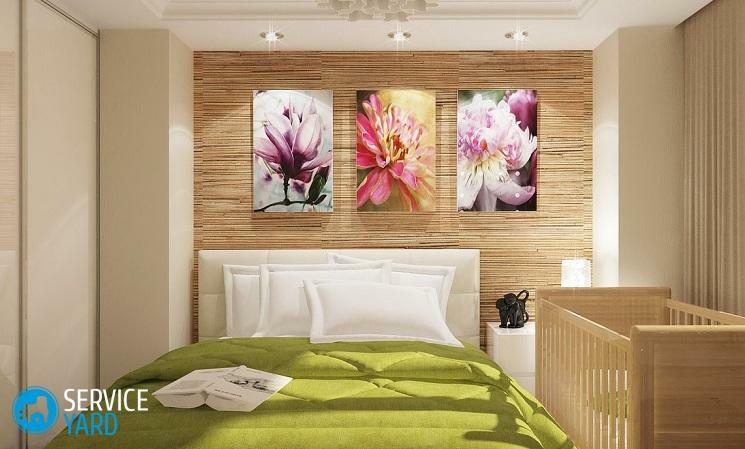
Wall layout
The next stage is the markup. The panels should be level. This is done by level or with a plumb line. It's not so important which tool to use, the main thing is to apply even lines to fit the panels well.
Important! Do not forget to close the furniture and floors with plastic wrap.
Cooking wallpapers
Are the walls ready? Excellent. It's time to do bamboo wallpaper. Do not glue them immediately after being brought home - they should get used to the room. Therefore, proceed as follows:
- Roll the roll in the room, which we are going to finish.
- We leave it alone for two days so that the material "acclimatized".
Important! This is necessary in order to adjust the amount of moisture in the panels. If it matches what's in the room, the wallpaper will hold up well.
to the contents ↑Mounting
The assembly consists of several stages:
- cutting;
- application of glue;
- gluing;
- control;
- drying.
Features of cutting
After the wallpaper has spent a while, they need to be cut. This is done with a sharp knife:
- To cut the panel along, special efforts are not required, because the cut passes between the racks, that is, the fabric.
- But if you need to cut the rails yourself, you'll have to tinker. For this purpose, an electric jigsaw or metal hacksaw is suitable. A canvas with fine teeth will greatly facilitate your life - the cut will be more even.
Apply glue
It's better, of course, to cover the entire room in one sitting. But this does not mean that you have to immediately glue all the wallpaper with glue. It is best to divide the front of the work into several sections( for example, according to the size of each panel):
- Determine the area of the wall that will be pasted.
- Apply the adhesive composition with a notched trowel to the wall.
- Brush the same composition on the back of the wallpaper.
- Wait for 10-15 minutes.
- Attach the panel to the wall.
- Press firmly on it.
- Roll with the roller.
- Remove excess glue without smearing.
- Glue the following cloths.
- Wait for a couple of hours.
- Check the adhesion of surfaces.
- If necessary, roll the panels again with the roller.
Important! Between the panel and the wall there should be no spaces filled with air;if they are - type the glue in the syringe and pour it into the cavity.
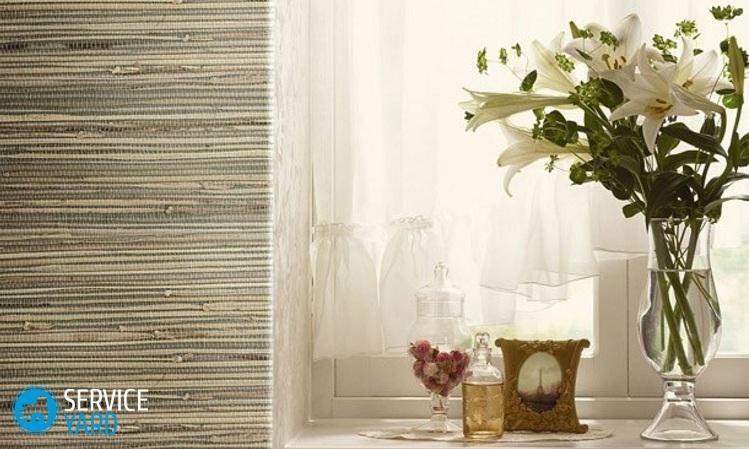
If you have "liquid nails"
Having decided that the most suitable adhesive for bamboo wallpaper on a fabric basis is "liquid wallpaper", keep in mind that:
- Apply it to the back of the panel with strips.
- The consumption of glue averages 400 g per square meter.
- The composition is superimposed where the most dense fabric( between the strips, it is cellular, it does not need to be smeared with glue).
- After the adhesive layer is applied, the panel is applied to the wall, held for several minutes, then removed, again applied to the same place, and is now strongly pressed.
- After this, the wallpaper is gently smoothed with a soft cloth.
Important! This work needs to be done with an assistant who will support the panel in the right position.
Some tips
To make the room look more impressive, you need to mask the joints. This can be done with the help of moldings in tone. They are fixed with glue and nails. When working with bamboo wallpaper, it is necessary to take into account a number of other considerations:
- To make the cross-section smooth, you can wrap the slats with paint tape.
- Make sure that the longitudinal sections are larger than the transverse sections - they are practically not visible.
- The newly-glued room should be often ventilated until the adhesive is finally polymerized.
Care for bamboo
Special care such wallpaper does not require. But:
- It is better to refrain from the use of hard brushes and metal sponges
- Periodically, you need to handle the panel with a means for furniture.
- Dust between racks is best vacuum cleaned.
- Despite the fact that bamboo is resistant to moisture, getting plenty of water still should not be allowed - it will not start to rot, but cracks at joints can appear.
As you can see, bamboo panels are an excellent finish for any room. And having an idea of how to glue the bamboo wallpaper, you will be able to implement various creative ideas and perform repair qualitatively.

